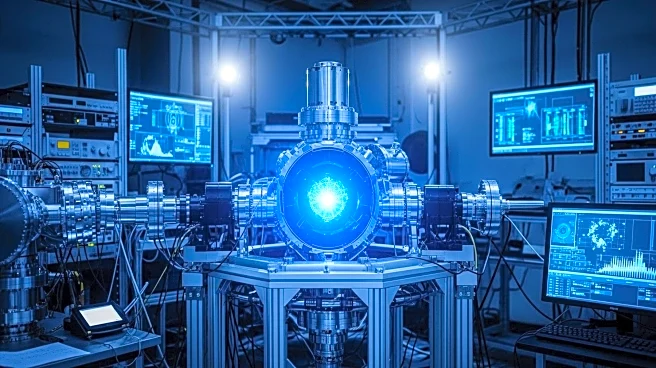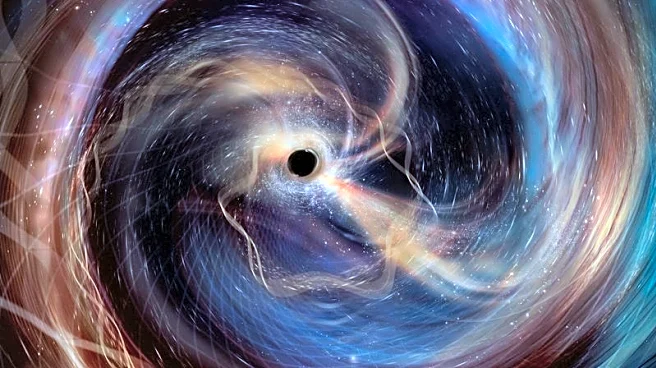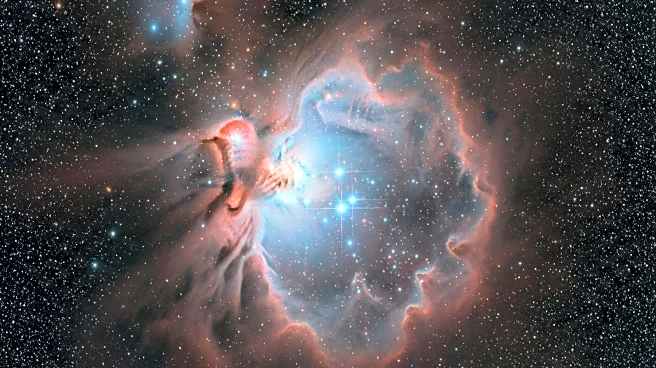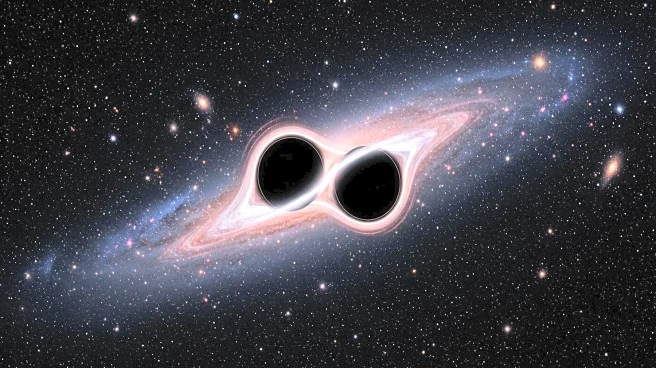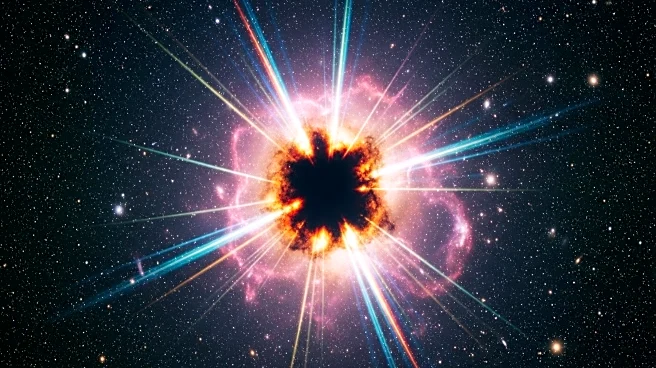What is the story about?
What's Happening?
An international team of scientists has developed a new detector capable of capturing dark matter particles, which make up about 80% of the universe's mass. The detector, a superconducting nanowire single-photon detector (SNSPD), is sensitive to lower-energy events and can probe dark matter particles across a wide mass range below one mega electron volt (MeV). This breakthrough allows researchers to search for dark matter particles in a previously inaccessible mass range, offering new insights into the composition and structure of dark matter.
Why It's Important?
The ability to detect dark matter particles in a low mass range represents a significant advancement in the field of particle physics. Understanding dark matter is crucial for explaining the universe's structure and behavior, as it influences the formation of galaxies and cosmic phenomena. This research could lead to new models and theories that enhance our understanding of the universe and address fundamental questions in cosmology and astrophysics.
What's Next?
Further technological improvements to the SNSPD are expected to increase sensitivity and enable the detection of even smaller dark matter particles. Researchers plan to deploy the system underground to shield it from other sources of radiation, enhancing its accuracy. Continued advancements in detector technology could lead to direct detection of dark matter, providing valuable data for refining existing theories and developing new models.
AI Generated Content
Do you find this article useful?
